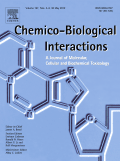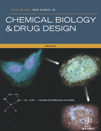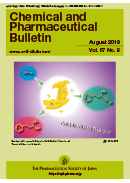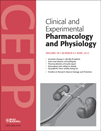
CHEMICO-BIOLOGICAL INTERACTIONS
Scope & Guideline
Connecting Research for a Safer Tomorrow
Introduction
Aims and Scopes
- Chemical Toxicology:
Research examining the toxic effects of various chemicals, including drugs, environmental pollutants, and natural products on biological systems and their underlying mechanisms. - Pharmacokinetics and Drug Interactions:
Studies on the metabolic pathways of drugs, their interactions with enzymes, and implications for therapeutic efficacy and safety. - Cancer Biology and Therapeutics:
Investigations into the molecular mechanisms of cancer, including the development of novel therapeutic agents and the evaluation of their efficacy against various cancer types. - Nanotechnology in Medicine:
Exploration of nanomaterials and their applications in drug delivery systems, therapeutic agents, and diagnostics. - Neuropharmacology and Neurotoxicity:
Research focusing on the effects of chemical substances on the nervous system, including neuroprotective agents and the mechanisms of neurotoxic effects. - Oxidative Stress and Inflammation:
Studies that explore the role of oxidative stress and inflammatory processes in disease pathology and the development of therapeutic interventions. - Natural Products Chemistry:
Isolation and characterization of bioactive compounds from natural sources and their potential applications in health and disease.
Trending and Emerging
- Ferroptosis and Cell Death Mechanisms:
Research on ferroptosis, a form of regulated cell death distinct from apoptosis, has gained momentum, with studies exploring its implications in cancer and neurodegenerative diseases. - Drug Repurposing and Combination Therapies:
There is an increasing interest in repurposing existing drugs for new therapeutic applications, particularly in oncology, as well as exploring synergistic effects of drug combinations. - Role of Microbiota in Health and Disease:
The influence of gut microbiota on health, disease mechanisms, and drug metabolism is becoming a significant area of investigation, reflecting a broader understanding of systemic interactions. - Biochemical Pathways in Disease:
Emerging research is focusing on detailed biochemical pathways involved in various diseases, particularly those linked to inflammation, oxidative stress, and metabolic disorders. - Nanoparticle Applications in Drug Delivery:
The use of nanoparticles for targeted drug delivery and their role in enhancing the bioavailability and efficacy of therapeutic agents is an area of increasing research interest. - Computational Toxicology and Drug Design:
Advancements in computational methods for predicting chemical interactions, toxicity, and drug design are trending, allowing for more efficient screening of potential therapeutic agents.
Declining or Waning
- Traditional Herbal Remedies:
Research focusing on the efficacy of traditional herbal remedies has decreased, possibly due to a shift towards more synthetic and biotechnological approaches in drug development. - Environmental Toxicology of Metals:
While still relevant, studies specifically targeting the environmental toxicology of heavy metals have become less frequent, as the field expands to encompass broader environmental impacts and novel pollutants. - Basic Mechanistic Studies:
There appears to be a waning interest in purely mechanistic studies that do not translate into therapeutic applications, as the emphasis shifts towards translational research and clinical relevance. - In Vitro Models of Disease:
The reliance on traditional in vitro models has seen a decline, with a growing preference for more complex systems such as organ-on-a-chip technologies and 3D culture systems that better mimic in vivo conditions.
Similar Journals

International Journal of Pharmacology
Fostering Global Dialogue in Pharmacology and ToxicologyWelcome to the International Journal of Pharmacology, a key publication in the field of pharmacology, published by ASIAN NETWORK SCIENTIFIC INFORMATION (ANSINET). Since its inception in 2006, this journal has provided a vital platform for researchers and professionals to disseminate their findings and insights in pharmacology, toxicology, and pharmaceutics. Despite recent discontinuation in Scopus coverage, the journal's dedication to fostering scientific dialogue continues to attract contributions from esteemed scholars globally. With an **ISSN of 1811-7775** and **E-ISSN of 1812-5700**, the journal seeks to bridge the gap between laboratory research and clinical application, promoting a deeper understanding of drug actions and interactions. Although it operates under traditional access options, the relevance of its published studies to ongoing pharmacological research remains significant.

Bangladesh Journal of Pharmacology
Bridging Research and Practice in PharmacologyThe Bangladesh Journal of Pharmacology, published by the Bangladesh Pharmacological Society, is a leading platform dedicated to advancing knowledge in the field of pharmacology. With an ISSN of 1991-007X and an E-ISSN of 1991-0088, this open access journal has been making significant contributions to the field since its inception in 2006. Located at the Bangabandhu Sheikh Mujib Medical University in Dhaka, Bangladesh, the journal provides a vital resource for researchers, professionals, and students interested in pharmacology, toxicology, and pharmaceutics. As of 2023, the journal is categorized in the Q4 quartile for pharmacology, ranking 240th out of 313 in Scopus and falling within the 23rd percentile, reflecting its commitment to the dissemination of high-quality research. The journal encompasses a diverse array of topics from basic research to clinical applications, aiming to foster a deeper understanding of pharmacological principles and practices. By providing open access to its content, the Bangladesh Journal of Pharmacology ensures that valuable scientific findings are readily available to the global community, supporting the advancement of medical and pharmaceutical sciences.

Marine Drugs
Diving Deep into Marine Biotechnology and PharmacologyMarine Drugs is a leading peer-reviewed journal dedicated to the field of drug discovery and development derived from marine resources. Published by MDPI in Switzerland since 2003, this open-access journal has established itself as a prominent platform for the dissemination of high-quality research, evidenced by its Q1 rankings in 2023 across multiple categories including Drug Discovery, Pharmaceutical Science, and Pharmacology, Toxicology, and Pharmaceutics. With a global readership, Marine Drugs specializes in the exploration of bioactive compounds from marine organisms, advancing our understanding of natural product chemistry and its applications in pharmacology and therapeutics. The journal actively encourages submissions from researchers worldwide, showcasing innovative studies, reviews, and methodologies that contribute to the growing field of marine biotechnology. Researchers, professionals, and students alike will find Marine Drugs an invaluable resource for enhancing their knowledge and fostering collaborations in marine drug research.

Chemical Biology & Drug Design
Pioneering the intersection of chemistry and medicine for a healthier future.Chemical Biology & Drug Design, an esteemed publication by WILEY, serves as a vital platform for the dissemination of pioneering research in the interdisciplinary fields of biochemistry, drug discovery, molecular medicine, organic chemistry, and pharmacology. With a dedicated commitment to advancing the understanding of chemical interactions and drug development, this journal not only fosters innovation but also bridges the gap between theoretical research and practical applications. It boasts an impressive impact factor and is recognized in the 2023 category quartiles as Q3 in Biochemistry and Molecular Medicine, and Q2 in Drug Discovery, Organic Chemistry, and Pharmacology, indicating its relevance and influence in these crucial areas. The journal’s rankings across various Scopus categories further solidify its position as a reputable resource for researchers, professionals, and students striving to stay at the forefront of medicinal chemistry and drug design. While primarily traditional access-based, the journal's evolving scope from 2006 to 2024 ensures an ongoing contribution to essential scientific dialogue, making it an indispensable read for those committed to advancing health sciences.

CHEMICAL & PHARMACEUTICAL BULLETIN
Connecting theory with practice in the pharmaceutical landscape.CHEMICAL & PHARMACEUTICAL BULLETIN, published by the Pharmaceutical Society of Japan, has been a cornerstone in the fields of chemistry, drug discovery, and medicine since its inception in 1958. With an ISSN of 0009-2363, this esteemed journal offers a platform for the dissemination of innovative research and critical insights contributing to these dynamic disciplines. Housed in Tokyo, Japan, it is strategically poised to bridge the gap between chemical sciences and pharmaceutical applications. Although the journal operates under a traditional subscription model and does not currently offer open access, it maintains a solid reputation, evidenced by its Q3 category rankings in multiple relevant fields and its percentile positions in Scopus, specifically 48th in General Chemistry and 30th in Drug Discovery. Researchers, professionals, and students alike will find invaluable resources within its pages, as it diligently covers shifting paradigms and emerging methodologies critical to advancing both theoretical understanding and practical applications in the pharmaceutical realm.

ACTA PHARMACOLOGICA SINICA
Championing High-Impact Research in PharmacologyACTA PHARMACOLOGICA SINICA is a premier journal in the field of pharmacology, published by the esteemed Nature Publishing Group. With a strong history since its inception in 1980, this journal is recognized for its impactful contributions to the fields of medicine and pharmacology, consistently securing a Q1 ranking in multiple relevant categories, including Pharmacology (Medical). Drawing on a robust international readership, it ranks impressively at #8 out of 272 in the specialty of Medical Pharmacology, placing it in the top 97th percentile according to Scopus data. Although currently not an open-access publication, ACTA PHARMACOLOGICA SINICA remains a vital resource for researchers, professionals, and students seeking to advance their understanding of pharmacological sciences. Its commitment to disseminating high-quality research underscores its significance in fostering innovation and exploration in the medical landscape.

CLINICAL AND EXPERIMENTAL PHARMACOLOGY AND PHYSIOLOGY
Unveiling Cutting-Edge Developments in Drug and Body DynamicsCLINICAL AND EXPERIMENTAL PHARMACOLOGY AND PHYSIOLOGY, published by WILEY, is a premier journal that serves as a vital resource for researchers, professionals, and students in the fields of pharmacology and physiology. With ISSN 0305-1870 and E-ISSN 1440-1681, this journal has established itself as a significant contributor to scientific dialogue since its inception in 1974. Currently spanning until 2024, it consistently publishes cutting-edge research addressing both experimental and clinical advancements in pharmacology and physiology. Recognized for its quality, it holds a Q2 ranking in the 2023 Pharmacology category and notable Q3 rankings in both Physiology and Medical Physiology. The journal's coverage of topical issues not only ensures a robust platform for innovative findings but also fosters collaborations across disciplines. Although not an Open Access journal, its curated content is invaluable for advancing knowledge, as evidenced by its solid Scopus rankings, which place it within the top percentiles of its field. Engaging with this journal means staying at the forefront of research that shapes clinical practices and experimental methodologies.

CURRENT MEDICINAL CHEMISTRY
Shaping Tomorrow’s Medicines Through Rigorous Research.Current Medicinal Chemistry is a leading journal published by Bentham Science Publishers Ltd, known for its rigorous focus on the multifaceted realm of medicinal chemistry. With an ISSN of 0929-8673 and E-ISSN 1875-533X, the journal plays a crucial role in disseminating high-quality research findings that bridge the gap between chemistry and health sciences. Operating from Sharjah, United Arab Emirates, it has been a prominent scholarly resource since its inception in 1994, and is expected to continue until 2024. Current Medicinal Chemistry has earned its place in the academic community with an impressive impact factor and categorization in Q1 and Q2 quartiles across various disciplines, including Organic Chemistry, Biochemistry, Drug Discovery, and Pharmacology, highlighting its substantial contribution to these fields. Notably, it ranks 24th in Organic Chemistry and is within the 88th percentile, underscoring its appeal to researchers, professionals, and students alike who are keen on exploring cutting-edge advancements in drug design and development. Although it is not an open-access journal, it provides vital content that informs and inspires innovation in medicinal chemistry, appealing to a global audience committed to enhancing human health through scientific discovery.

JOURNAL OF APPLIED TOXICOLOGY
Innovating Toxicology Research for a Safer TomorrowJOURNAL OF APPLIED TOXICOLOGY, published by Wiley, stands as a leading platform in the field of toxicology, focusing on the rigorous examination of chemical substances and their effects on biological systems. With an impressive Impact Factor, it ranks in the top quartile (Q2) for toxicology journals, reflecting its esteemed position within the scientific community. The journal, identifiable by its ISSN 0260-437X and E-ISSN 1099-1263, has been an invaluable resource since its inception in 1981, and it continues to serve as a conduit for innovative research and practical applications through 2024. Positioned at the forefront of the field, it garners recognition in the Scopus Rankings, where it ranks #31 out of 133 journals in the toxicology category, placing it in the 77th percentile—a testament to its contribution to the advancement of pharmacology and toxicological sciences. While not an open-access journal, it remains accessible to a wide audience of researchers, professionals, and students eager to explore cutting-edge findings in applied toxicology, making it a pivotal resource for enhancing knowledge and fostering collaboration in the field.

JOURNAL OF BIOCHEMICAL AND MOLECULAR TOXICOLOGY
Fostering Innovation in Molecular Toxicology ResearchJournal of Biochemical and Molecular Toxicology, published by Wiley, plays a pivotal role in the advancement of knowledge within the fields of biochemistry, toxicology, and molecular biology. Established in 1998, this esteemed journal has garnered a significant reputation, evidenced by its current placement in the Q2 quartile across several categories, including Biochemistry, Health, Toxicology and Mutagenesis, and Medicine. With an ISSN of 1095-6670 and an E-ISSN of 1099-0461, it serves an international audience, offering critical insights and innovative research that shape our understanding of biochemical interactions and toxicological assessments. While it does not operate on an open-access model, the journal ensures rigorous peer review and high-quality publication standards, making it a valuable resource for researchers, professionals, and students dedicated to the exploration of molecular toxicology. The journal's recognized impact within the scientific community is reflected in its competitive rankings among specialized journals, fostering significant contributions to both academic and applied contexts.